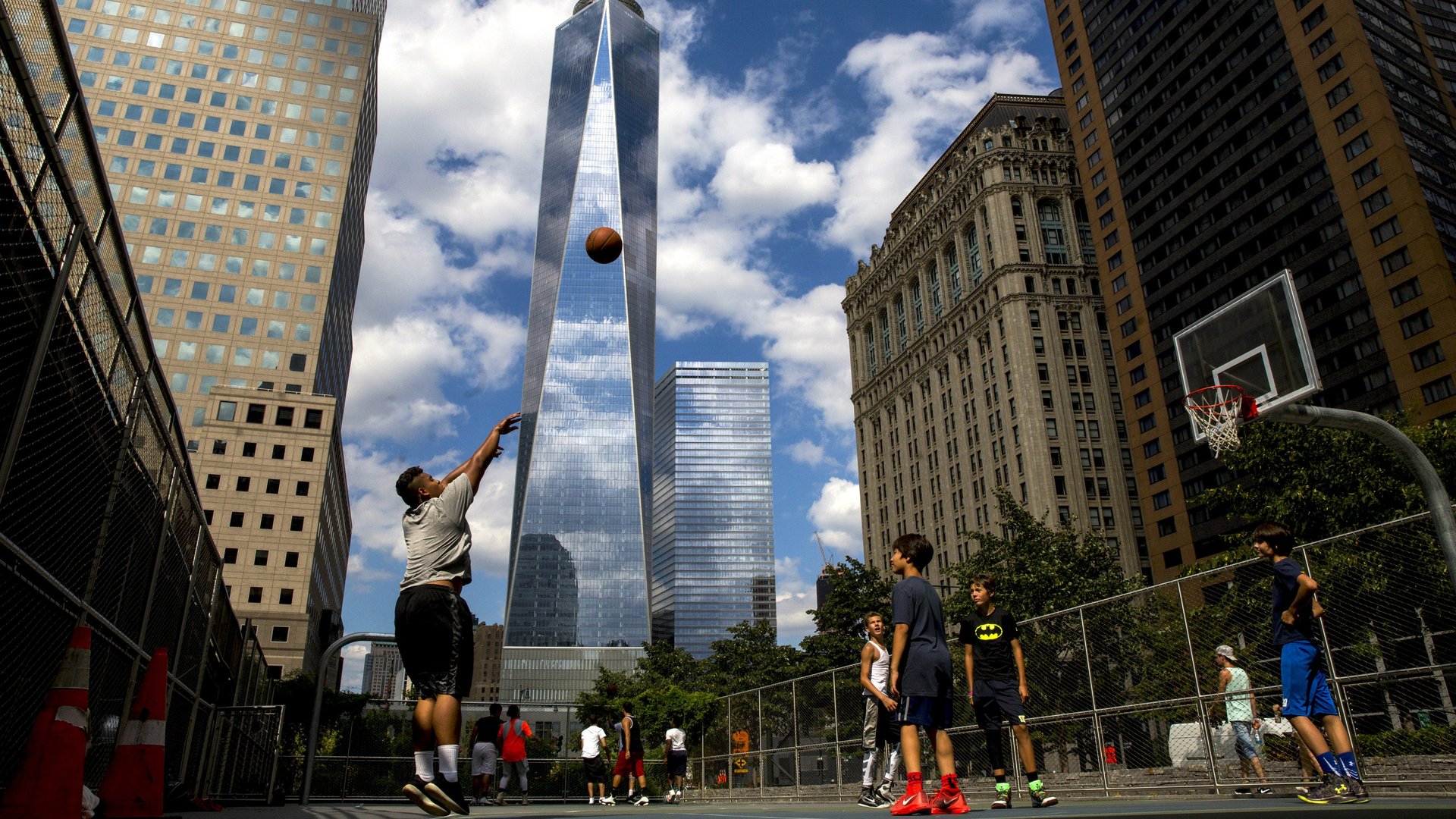America’s richest people live in one specific kind of neighborhood
A recent report from Bloomberg revealed that only five of the wealthiest zip codes in the US are in big cities—and they’re not in the conventionally wealthy (aka most expensive) neighborhoods you’d expect. In fact, rather than the Bel Airs and Sohos of the world, America’s richest residents actually share a zip code with the city’s financial districts.


A recent report from Bloomberg revealed that only five of the wealthiest zip codes in the US are in big cities—and they’re not in the conventionally wealthy (aka most expensive) neighborhoods you’d expect. In fact, rather than the Bel Airs and Sohos of the world, America’s richest residents actually share a zip code with the city’s financial districts.
And by richest, we mean fattest paychecks according to tax returns. A recent Bloomberg analysis used IRS data to rank 200 different zip codes based on the average income for the residents living in those areas. The winner—that is, America’s wealthiest zip, 33109—is tiny Fisher Island, a private enclave just off of Miami’s South Beach accessible only by water taxi or helicopter.
Beyond Fisher Island, the data also revealed that the top twenty zip codes with the highest earners were, unsurprisingly, in California and New York. Most of those zips were in upscale, non-urban areas. But four of the five times a major city appears at the top of the list—Boston, Los Angeles, and San Francisco, as well as New York at number 21—the zip unexpectedly corresponds with the city’s financial hub.
Century City—Los Angeles’s business district—for instance, snagged spot number seven, a surprising upset when faced with the likes of Hollywood, Beverly Hills, and Bel Air. Likewise, San Francisco’s financial district took 10th place and Boston’s took 12th. New York City’s winning zip code, which was also its richest in 2016, is home to the New York stock exchange and the Federal Reserve. Again, business districts rather than those cities’ long-time exclusive residential neighborhoods—FiDi vs TriBeCa.
The data seems to suggest that if America’s wealthy choose to live in a city—rather than a sprawling suburban mansion or on a private island—they’re living in a financial district, an area that the world’s big banks and consulting firms have traditionally called home.
Anyone who’s visited a financial district knows that it’s not exactly a city’s cultural hub. Populated with suits by day and often silent as a grave by night, these areas seem a curious draw for folks with the highest paychecks in America. So what is luring them there?
Flocking to FiDi
Ralph McLaughlin, founder and chief economist of Veritas Urbis Economics, speculates that the one-percenters living in financial districts are likely financial workers, specifically investment bankers, who work very long hours. Living close to where their offices are located becomes a premium that they’re willing to pay. He adds that “financial districts in big cities are also just expensive places, full stop.” In an industry that relies on knowledge spillover, clustering in one space becomes necessary, driving up costs on land and space.
But not every analyst agrees. Grant Long, senior economist at StreetEasy, says the people who live in financial districts probably don’t work in them. In New York, for example: “We say the financial district because of its history, not because its where most of the financial firms are located,” he says over the phone, noting that most banks have relocated to Manhattan’s midtown area. “I think that the neighborhood is much more diverse than it was traditionally in terms of employment,” he says.
Long also suggests that business districts have, in recent years, emerged as centers of redevelopment, now offering more residential options than they have in the past. While new builds in New York’s packed FiDi are less common, older landmark buildings are being converted into luxury apartments with 24-7 amenities to draw in wealthy professionals. On the West Coast, Century City is also introducing vertical living to LA, with projects like the Century Plaza Towers—two twin 46-story residential buildings flanking the redesigned Century Plaza hotel.
Interestingly, many of these wealthy professional—those who may be responsible for landing their zip code on America’s richest list—might actually be millennials. Long says this would follow a larger trend of affluent young professionals trading in suburb life for city dwelling:
“You have millennials, obviously a big part of the workforce now, getting older getting to a time in their careers where they’re having a lot of earning power. And millennials are increasingly choosing cities over suburbs, and delaying having children, which makes them more flexible and able to live in really dense environments.”